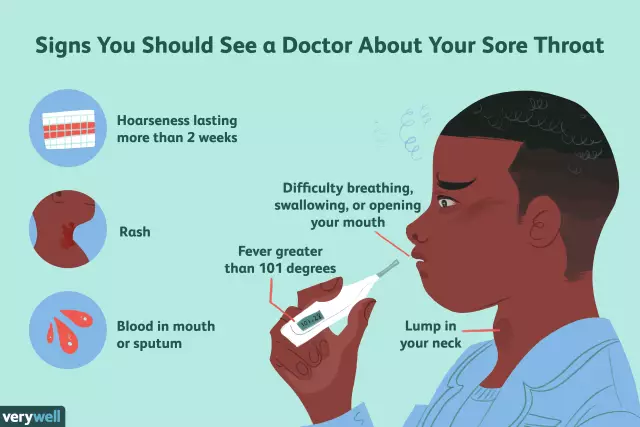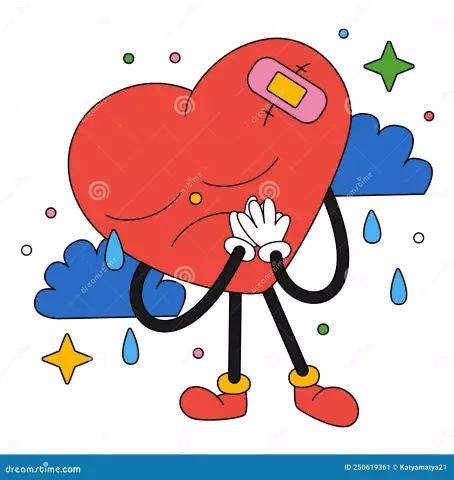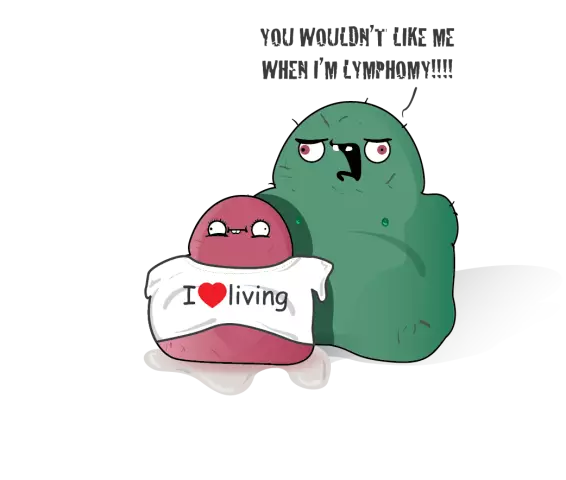- Author Rachel Wainwright [email protected].
- Public 2023-12-15 07:39.
- Last modified 2025-11-02 20:14.
How to understand that the pancreas hurts

The pancreas is not located under the stomach. The endocrine organ owes its name to anatomists who consider the human body in the supine position. In fact, the gland is located at the same level as the stomach, but outside the peritoneum. The peritoneum is a sheath of connective tissue that wraps the abdominal organs and covers the walls of the abdomen and lower back. All digestive organs are united into a common anatomical system, outside of which is the pancreas and urinary tract, including the kidneys.
To determine what exactly the pancreas hurts, you need to have an idea of its functions.
The pancreas is an endocrine and exocrine organ. It releases substances directly into the blood and "out", that is, into the digestive tract, namely, into the duodenum in the area of the Vater's papilla. This is the mouth for the bile duct and the pancreatic duct, through which the digestive enzymes necessary for the breakdown of protein foods enter. With a spasm or blockage of the duct, the pancreas hurts and the gallbladder suffers.
The endocrine function of the pancreas is carried out in the islets of Langerhans, located in the tail of the gland. This is where insulin and glucagon are produced. Both hormones play a critical role in the nutrition of cells throughout the body. Therefore, when the pancreas hurts, first of all, it is necessary to pass tests not only for the content of digestive enzymes, but also for glucose in the blood.
Pain in the pancreas, symptoms of pancreatitis
Pancreatitis is an inflammation of the pancreas (Latin pancreas). One of the manifestations of the inflammatory response is pain. Pain in pancreatitis is of a girdle nature, that is, without a specific localization. At the same time it hurts both in the right and in the left hypochondrium, as well as in the lower back - at the level of the kidneys. In this case, there is no tension in the abdominal muscles, since the pancreas is located retroperitoneally and has no direct connection with the internal organs. Therefore, if the pancreas is affected, the whole abdomen hurts without a specific localization - a trigger point that could indicate a specific organ.
In a chronic inflammatory process, periods of exacerbation are replaced by remissions, the duration of which can reach several years, subject to certain rules. Since the pancreas hurts, diet is critical during the course of the disease. Not only certain foods are capable of provoking an attack: spicy and fatty foods, as well as alcoholic beverages, but also the amount of food consumed.
As complications of inflammatory reactions, the following pathological processes can develop in the pancreas:
- Pancreatic necrosis: fatty and hemorrhagic;
- Cancer tumor: primary and metastatic.
Fatty pacreonecrosis develops as a result of the activation of digestive enzymes within the gland. Simply put, enzymes begin to digest their own tissues. This is how pains appear in the pancreas, symptoms of intoxication of the body, which can lead to respiratory arrest. There are the following signs of fatty pancreatic necrosis:
- Acute pain in the left hypochondrium radiating to the left forearm. In this case, the pancreas hurts as if an acute myocardial infarction develops. You can distinguish between the two diseases by making an electrocardiogram. Cardiac remedies do not relieve pain, but the patient becomes easier in the forced position of the body, with the knees pressed to the stomach;
- Vomiting not relieving. When the vessels of the gland are damaged, vomit contains impurities of blood. If hemorrhagic pancreatic necrosis develops, then the pancreas hurts much more;
- Massive intake of digestive enzymes into the bloodstream leads to the development of functional renal failure, which is manifested by a decrease in urine output and an aggravation of the general intoxication of the body;
- Damage to the central nervous system due to increased levels of hormones and enzymes in the blood leads to mental disorders. So, with pancreatic necrosis, not only the pancreas hurts, but also signs of damage to the central nervous system. Transcendental excitement generates inappropriate behavior, anxiety, alternating with depression of consciousness to a coma.
Hemorrhagic pacreonecrosis is caused by the destruction of the vascular bed of the gland due to the melting of the capillary walls by digestive enzymes. Often hemorrhagic, that is, accompanied by bleeding, the process accompanies fatty pancreatic necrosis. In severe cases of the disease, the destruction of blood vessels begins from the very beginning. And then the pancreas hurts even more intensely, and no forced position of the body brings relief.
Cancer tumor, both primary and metastatic, instantly leads to hemorrhagic pancreatic necrosis, with all its manifestations and consequences. With cancer, the pancreas hurts and treatment is ineffective.
Pancreatic pain, treatment of pancreatitis and pancreatic necrosis
The most important thing in the treatment of pancreatitis is pain relief. The effect is achieved when the organ is completely disconnected from the digestive system. It is necessary to create conditions under which the need for the synthesis of proteolytic enzymes will disappear. Therefore, the only way to relieve the pain of the pancreas is by absolute starvation. The difficulty in treating acute pancreatitis is that the patient has an increased appetite to such an extent that fasting leads to fainting. This is due to the increased secretion of both insulin and glucagon. Both hormones target glucose uptake. One removes glucose from the depot, the other delivers it to the cells. When the pancreas hurts, the diet should include plenty of fluids. However, the liquid should not contain a single milligram of sugar. And mineral water is gas.

For dull pain in the pancreas, treatment includes antispasmodics. They expand the lumen of the duct of the gland, and the enzymes freely enter the intestine. At the same time, drugs are used that thin bile, but not choleretic. This allows you to get rid of excess digestive enzymes that are aggressive towards their own organ.
A positive effect is observed when using synthetic enzyme preparations. They cannot destroy the tissues of the gland, but by creating a powerful concentration in the blood, they inhibit the production of their own enzymes through feedback. In some cases, rinsing the stomach with cold water can help relieve the pain of the pancreas. The effectiveness of the procedure is explained by the reflex effect on the gland. The receptors in the gastric mucosa inform the central nervous system about the filling of the organ. The feeling of hunger dulls, the formation of enzymes stops.
Found a mistake in the text? Select it and press Ctrl + Enter.






